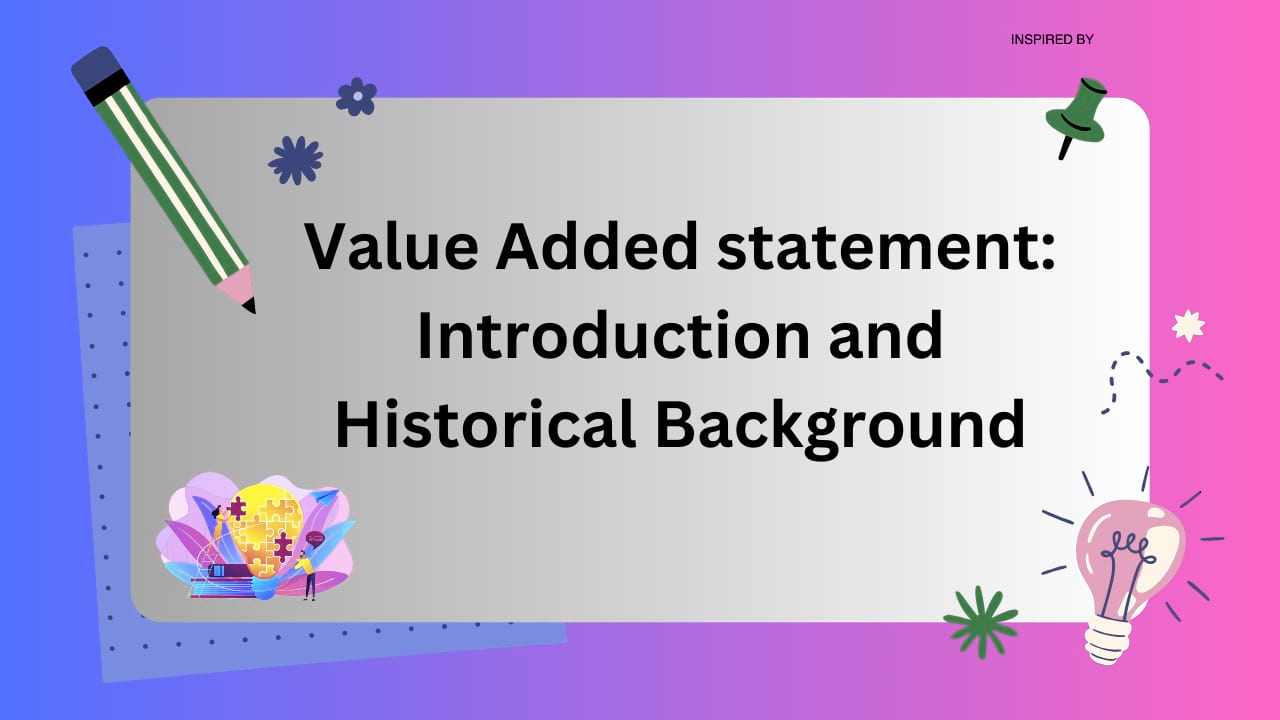A Value Added statement is another way to understand the performance or profitability of an enterprise. It shows how the benefits of the efforts of an enterprise are shared between employees, providers of finance, the state, and towards replacement and expansion.
Value added can be defined as the value created by the activities of a firm and its employees, that is, sales less the cost of bought-in goods and services. The value-added statement (VAS) reports on the calculation of value-added and its allocation among the stakeholders in the company. Must Check Various Types of Lease.
The value-added statement (VAS) is a voluntary disclosure and adds little information to that contained in the income statement. During the last two decades, various theories have been used to explain voluntary and social disclosures. The fact that the VAS has attained such widespread publication despite being a relatively marginal disclosure, gives an early indication that the VAS is not a neutral corporate social disclosure but that it could be used to benefit those publishing it. VAS is used to alter perceptions about the company and in this way to manage stakeholder expectations.
Quick Links
Value Added Statement
Financial reporting has traditionally been concerned with the income statement, balance sheet and cash flow statement. Over the years, there have been initiatives to expand the financial reporting package. One of these was that the Corporate Report of the Accounting Standard Steering Committee of Britain suggested the inclusion of a value-added statement (VAS) in 1975.
The Value Added statement is a financial statement that shows how much value (wealth) has been created by an enterprise through the utilization of its capacity, capital, manpower, and other resources and allocated to the following stakeholders:
The workforce –for wages, salaries, and related expenses;
The financiers –for interest on loans and for dividends on share capital.
The government –for corporation tax.
The business –for retained profits.
A statement of VA represents the profit and loss account in a different and possibly more useful manner.
The conventional VA statement is divided into two parts – the first part shows how VA is arrived at and the second part shows the application of such VA. You may also like Contingent Liability.
Historical Background
The concept of value-added was initially used in 1790 in the first North American Census of Production (Gilchrist 1970). Trencher Cox, a treasury official, whose techniques have since been adopted by most industrial nations in the calculation of Gross National Product (GNP), was responsible for realizing that value-added would avoid double counting.
Value added has also been defined in the economic literature by Ruggles and Ruggles:
The value added by a firm, i.e. the value created by the activities of the firm and its employees, can be measured by the difference between the market value of the goods that have been turned out by the firm and the cost of those goods and materials purchased from other producers. This measure will exclude the contribution made by other producers to the total value of the firm’s production so that it is essentially equal to the market value created by this firm. (1965, 50)
The VAS is therefore based on an economic definition of value added and calculates value added in accordance with the calculation of GNP. Must Read Weighted Average Cost of Capital.
Suojanen (1954) suggested the value-added concept for income measurement, as a way for management to fulfill their accounting duty to the various interest groups by providing more information that was not possible from the income statement and balance sheet. This makes him one of the first writers to use the value-added concept in terms of accounting for the results of an enterprise.
In general words, “value-added can be defined as the wealth generated by the entity through the collective efforts of capital providers, management, and employees”.
Advantages of Value Added Statement
- 1. It is an alternative performance measure to profit and therefore helps in the comparison of the performance of the company. Value added is a superior performance measure because it focuses on inputs that are under management’s control.
- 2. By employing various productivity measures like value added per rupee of capital employed, value added per rupee sales, value-added per employee, etc., helps in judging the productivity of the company.
- 3. Resource allocation decisions are normally based on the concept of maximizing profit but the value added statement provides a better alternative by focusing on other factors rather than just profit.
- 4. It also helps in devising incentive schemes for the employees of the company in a better way.
- 5. It reflects a broader view of the company’s objectives and responsibilities rather than just focusing only on the small aspects of the company. Must Check Supply Chain Management.
Limitation of Value added Statement
There is a duality associated with the VAS in that it reports on the calculation of value-added and its application among the stakeholders in the company. Many inconsistencies are found in practice in both the calculation and presentation of value-added in the VAS. These inconsistencies make the statement confusing, non-comparable, and unverifiable. The main areas of inconsistencies include, but are not limited to, the following:
- 1. The treatment of depreciation resulting in gross and net value added;
- 2. The treatment of taxes like pay-as-you-earn, fringe benefits, and other benefits in the employees’ share of value added;
- 3. The timing of recognition of value-added – production or sales;
- 4. The treatment of taxes such as VAT /GST and deferred tax; and
- 5. The treatment of non-operating items.
This has resulted in a company having more than one possible value-added figure and the allocation of value-added between the various stakeholders can be presented in different ways.
Recommended







